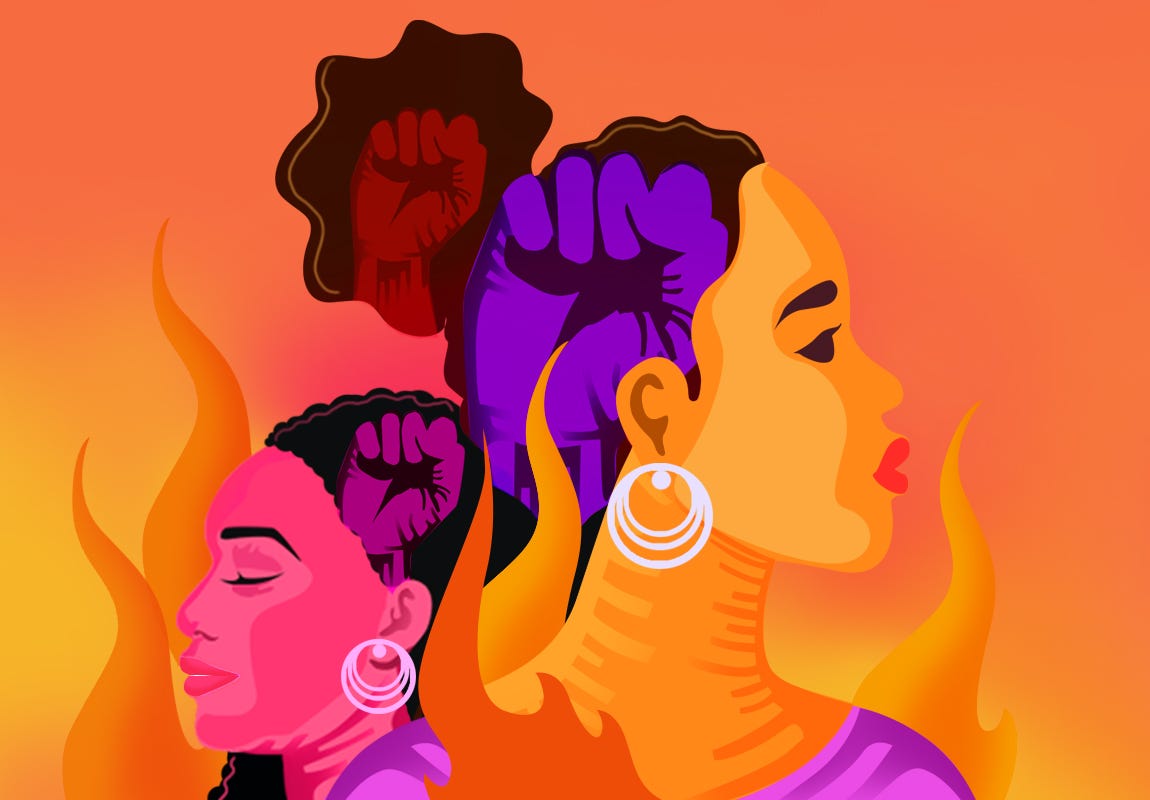Though the word ‘feminism’ appeared in mainstream literature in the 1890s, feminist views expressed by women have a much longer history.
From the early 1700s, women across the globe started raising their voice against their unequal status in society. Women started expressing their desire for equality through writings and discussions.
Even though the 17th century was a time of political upheaval and radical new ideas, there was little change in the social status of women. Women were regarded as “the weaker vessel” – a view supported by the belief that Eve was created from Adam’s ribs. Women were restricted to the roles of wives or mothers.
There were exceptions among some non-conformist groups like the Anti-Baptists and Quakers who believed that men and women were equal before God.
Despite there being so many barriers, women turned to writing to challenge the notion that women were inferior to men. One of the earliest writers was Bathsua Makin who wrote An Essay to Revive the Ancient Education of Gentlewomen in 1673.
Margaret Cavendish, Duchess of Newcastle, wrote Philosophical and Physical Opinions (1655) in which she complained that women were “kept like birds in cages”. This work received much criticism from men at the time.
Aphra Ben, born in 1640, is believed to be the first Englishwoman who earned her livelihood through writing. Her plays often mocked the male-dominated literary world and male chauvinist behaviour. Though her critics often accused her of plagiarism, her works became very popular and drew large audiences.
Mary Astell
Mary Astell was born in 1666 into an upper middle-class family in Newcastle, England. Her father, a coal merchant, died when she was just 12 years old.
Mary Astell, a devout Christian, stood against the Church’s stance that women’s secondary role was ordained by God. She argued that God had created men and women equally and it was men who made women inferior. She said these actions by men were an insult to God.
Mary Astell, a deeply religious woman and a High Church Anglican, differed only in the way the Church and society treated women. She started writing poems about loneliness in her late teenage years after falling into deep depression. At the age of 21, Mary Astell wrote a poem admitting that she could not see a future where she can use her talents to satisfy her ambition. She received little formal education. However, her uncle Ralph Astell educated her in classical philosophy.
By 1694, Mary Astell published her first book, A Serious Proposal to Ladies, urging women to develop their skills and think for themselves instead of being submissive to men and their ideas.
After the death of her mother, Mary Astell moved to Chelsea in London. She struggled financially in the beginning. Fortunately, William Sancroft, the Archbishop of Canterbury, gave her financial support. Impressed by her talents, he introduced her to a circle of influential women intellectuals. They became her lifelong friends who supported her ideas.
By 1694, Mary Astell published her first book, A Serious Proposal to Ladies, urging women to develop their skills and think for themselves instead of being submissive to men and their ideas. Her book titled Thoughts on Educationis considered to be a pioneering work. In that book, she stresses the urgent need for giving women proper education.
According to Mary Astell, giving proper education to women was the first step to equality.
Mary Astell maintained that girls must be taught to think and judge for themselves, and not just acquiring graceful social skills. She went on to argue that women’s “inferior role” was neither created by God nor was it inevitable.
According to Mary Astell, giving proper education to women was the first step to equality. In her works, she even proposed a university for women where they could lead a life of mind and contemplation.
In her book Some Reflections on Marriage (1700), she accepts the need for marriage, but she herself remained unmarried. She warns women not to marry based on lust or money.
Mary Astell was not an activist however. She observed the situations of women around her, spoke to them, understood their problems and presented it in her works. We can see her works as one of the earliest feminist perspectives. Her strong views on men and marriage played a significant role in limiting her appeal to some of the women readers of the time. She set up a charity school for girls in Chelsea, and eventually withdrew from public life. She died in 1731 of breast cancer.
Astell’s contribution to feminism is immense. Through her work, she empowered women to think for themselves, develop their skills, educate themselves and make their own choices.
Now put on your thinking hats and think about the following questions for a couple of minutes.
As a teacher, how do you describe the term "feminism" to your students?
Can you think of the reasons why earlier feminist writers' works received criticisms in that age?
How would you describe Mary Astell's contributions to feminism?
Write down your thoughts and discuss them with your students, children and your colleagues. Listen to their views and compare them with your own. As you listen to others, note how similar or different your views are to others’.
Thank you for listening. Subscribe to The Scando Review on thescandoreview.com.
Happy Teaching!














Mary Astell and The Roots of Feminism